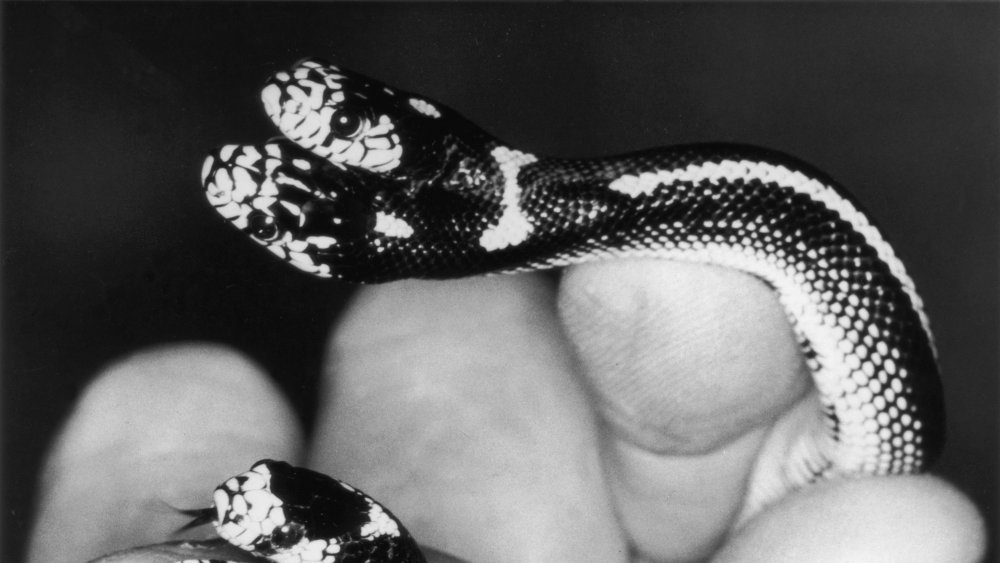The Hydra Might Actually Have Existed. Here's Why
These days, many people hear the name Hydra and immediately think of those guys who fight Captain America. Still, as Encyclopedia Britannica is happy to remind us, the original hydra is the Lernean Hydra, a prominent monster in Greek mythology. The hydra was a descendant of the monstrous Typhon and the serpent lady Echidna, and a frightening beast in its own right. The creature resembled a gigantic water snake that had several heads, and its home was Lerna, a marshy area near Argos.
The hydra did what legendary monsters tend to do, and terrorized the people and livestock of the area until it met Hercules, who proceeded to do what legendary heroes tend to do. Hercules had to slay the beast as one of his 12 heroic labors, which was difficult, because the hydra came with a nasty twist. When you cut one of its heads off, two fresh heads appeared from the wound. To add insult to injury, one of the heads was also immortal. Fortunately, Hercules managed to slay the beast thanks to is nephew, Iolaus, who cauterized the neck wounds while he was lopping heads off left and right. The immortal head was buried under a rock, and Argos was a much safer place.
All in all, the hydra was a threatening beast, but also a pretty good example of the ancient Greeks' excellent imagination. Or ... was it? Turns out, there's some evidence that the hydra might actually have existed. Yikes!
The real-life hydra is significantly less scary than the legendary one
Bad news: The Lernean Hydra may indeed have been inspired by a real creature. Good news: It wasn't a gigantic, poison-blooded terror with an infinite supply of heads. According to Chris Baraniuk of the BBC, snakes and many other animals can sometimes suffer from an extremely rare condition called polycephaly, where the animal is born with two (or even three) heads. Though this is a potentially horrifying situation, a polycephalic snake may in fact be perfectly healthy, apart from, you know, the whole "extra head" situation.
As developmental biologist Arkhat Abzhanov at London's Imperial College tells us, research with chicken eggs has suggested that polycephaly and similar abnormalities are more likely to occur in high temperatures. "If the temperature is above 30 C [86 F], the batch of eggs we receive that week will have a higher rate of abnormalities –- including two heads," he says. Seeing as Greece is a pretty warm country with a rich history of storytelling, it's possible that someone stumbled on a rare polycephalic snake ... and with time and artistic license, the unsettling discovery might have turned into the legend of the Lernean Hydra.

